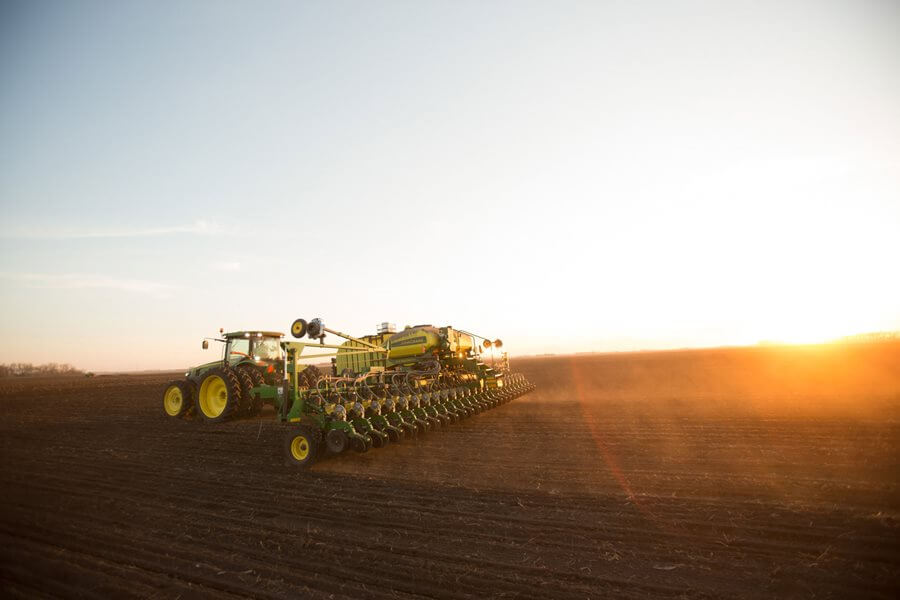Variable-Rate Planting Opens Doors with Large Farmers

Variable-rate planting has grown in popularity with corn in recent years and is now gaining traction for soybean acres. Recently, I partnered with a cooperative and my area’s ag technology specialist to develop a variable-rate planting prescription for a farmer’s soybean acres.
After a few years of working with this farmer on in-season imagery, we used technology to take a seat at the management table and to begin helping him make bigger decisions. With 5,000 acres and a serious white mold issue, the farmer was attracted to variable-rate planting as a unique approach to managing the problem. This farmer already uses variable-rate planting for corn, but hadn’t thought to develop a prescription for soybean acres as a way to combat the costly disease.
First, we layered 4–5 years of historical data with in-season imagery from the R7® Tool and uncovered what white mold had cost the operation: parts of the field yielded 70 bu./acre where others plummeted to 10 bu./acre.
Then, we managed populations. Currently, the farmer pushes very high populations, reaching 200,000 plants per acre. Our prescription divided the field into management zones and incorporated trials with population. We decreased populations to 120,000 and lower in some areas and will compare with some strips that will be planted at the original 200,000. The CROPLAN® variety selected for this trial works well with lower populations and boasts a white mold tolerance that makes it an ideal fit for these acres.
As with any new approach, the farmer is concerned that the decreased populations will result in a yield drag. On the same token, he is intrigued that he’ll save on seed cost and plan for maintained yield.
Utilizing unique technology like this allowed our team to demonstrate WinField’s knowledge and expertise as a foremost benefit, while also showcasing strong seed technology. Not to mention a sale of 300 bags of seed.
Here are a few simple considerations I learned while strengthening this relationship:
After a few years of working with this farmer on in-season imagery, we used technology to take a seat at the management table and to begin helping him make bigger decisions. With 5,000 acres and a serious white mold issue, the farmer was attracted to variable-rate planting as a unique approach to managing the problem. This farmer already uses variable-rate planting for corn, but hadn’t thought to develop a prescription for soybean acres as a way to combat the costly disease.
First, we layered 4–5 years of historical data with in-season imagery from the R7® Tool and uncovered what white mold had cost the operation: parts of the field yielded 70 bu./acre where others plummeted to 10 bu./acre.
Then, we managed populations. Currently, the farmer pushes very high populations, reaching 200,000 plants per acre. Our prescription divided the field into management zones and incorporated trials with population. We decreased populations to 120,000 and lower in some areas and will compare with some strips that will be planted at the original 200,000. The CROPLAN® variety selected for this trial works well with lower populations and boasts a white mold tolerance that makes it an ideal fit for these acres.
As with any new approach, the farmer is concerned that the decreased populations will result in a yield drag. On the same token, he is intrigued that he’ll save on seed cost and plan for maintained yield.
Utilizing unique technology like this allowed our team to demonstrate WinField’s knowledge and expertise as a foremost benefit, while also showcasing strong seed technology. Not to mention a sale of 300 bags of seed.
Here are a few simple considerations I learned while strengthening this relationship:
- Don’t be afraid to ask questions about technology. Ask your peers and ask farmers about their technology as well. What do they use, are they happy with it? Many will unveil that they have 10 years of historical data and nothing to show for it, which opens the door to use technology as a solution.
- Solve a problem in a unique way. Farmers today expect to use technology, so they are willing to listen. But they are not happy with pretty yield maps. They need the technology to pay for itself in yield and/or cost savings so you’ll have to take your solutions to the next level.
- Be ready with the right information. They’re going to ask what sets your tool apart, and as they’re pitched on more and more tools, they’re getting savvy about the differences.
- Embrace vulnerability. It’s a key part of building a relationship and being a real partner. Farmers won’t believe you if you have all the answers. Be upfront about what you know, how it can work with their operation and what you can learn together.

